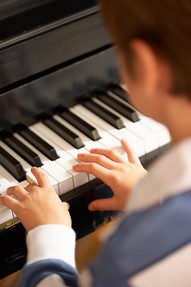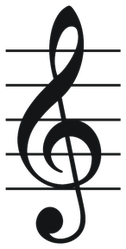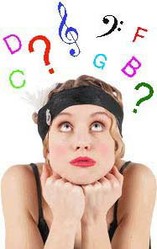 Fractions are a hard concept for younger children. But reading piano music needs an understanding of fractions to understand things like how whole notes are divided. When you teach young students how to read music there is a good chance their school teacher hasn't explained fractions to them yet. So you will need to fill in this gap in their understanding. This is a hard job when you aren't a math teacher. It can also make it hard to know which child is having problems with piano theory because they don't understand fractions.
Fractions are a hard concept for younger children. But reading piano music needs an understanding of fractions to understand things like how whole notes are divided. When you teach young students how to read music there is a good chance their school teacher hasn't explained fractions to them yet. So you will need to fill in this gap in their understanding. This is a hard job when you aren't a math teacher. It can also make it hard to know which child is having problems with piano theory because they don't understand fractions.
But you can work out if your piano student doesn't understand fractions? The first step is to know what grade children usually learn this in. If your student is in a younger grade it's probably safe to assume they haven't been taught yet. If the child is about the right age to learn fractions at school ask them if their teacher has talked about fractions. Then find out what has been discussed and what concepts your student understands. That way you can predict any possible problems. If your piano student is having a lot of problems with things like how a whole note is broken down into crotchets and quavers it's usually because they have a problem with fractions.
Now you know what the problem is what can you do? You can use the same methods parents can do to help their child understanding fractions with just a few small changes. The idea of using everyday life to explain fractions works well for piano teachers. The way a whole note is broken down into smaller parts can be explained to a child by linking it to how a cake or apple is cut into pieces. Games and books about fractions can also be useful. Books can be used to help explain things to a child in lessons. Games can help develop understanding at home. You can have copies of suitable books and games to either lend to families or to add to your supplies to be resold. You will need to talk to parents about the connection of fractions to piano theory though. Otherwise parents will be confused. But they are usually very happy to help their child learn fractions and piano theory at the same time. (It gives extra value to piano lessons too).
You can find tips on teaching fractions, as well as suitable books and games in the article "How Can I Help My Child Understand Fractions?"


 Workbooks are an essential for school age children learning piano.
Workbooks are an essential for school age children learning piano.





 Fractions are a hard concept for younger children. But reading piano music needs an understanding of fractions to understand things like how whole notes are divided. When you teach young students how to read music there is a good chance their school teacher hasn't explained fractions to them yet. So you will need to fill in this gap in their understanding. This is a hard job when you aren't a math teacher. It can also make it hard to know which child is having problems with piano theory because they don't understand fractions.
Fractions are a hard concept for younger children. But reading piano music needs an understanding of fractions to understand things like how whole notes are divided. When you teach young students how to read music there is a good chance their school teacher hasn't explained fractions to them yet. So you will need to fill in this gap in their understanding. This is a hard job when you aren't a math teacher. It can also make it hard to know which child is having problems with piano theory because they don't understand fractions.  When teaching piano theory to kids it's best to be creative. The more hands-on games you can think of the better your piano students will understand theory. The more they will enjoy piano lessons too.
When teaching piano theory to kids it's best to be creative. The more hands-on games you can think of the better your piano students will understand theory. The more they will enjoy piano lessons too. 



 Monkey Birthday Party Favorson 01/24/2013
Monkey Birthday Party Favorson 01/24/2013
 Butterfly Birthday Party Favorson 02/02/2013
Butterfly Birthday Party Favorson 02/02/2013
 Monster High Birthday Party Favorson 01/24/2013
Monster High Birthday Party Favorson 01/24/2013
 Basketball Party Favors for Girlson 01/30/2013
Basketball Party Favors for Girlson 01/30/2013



Comments